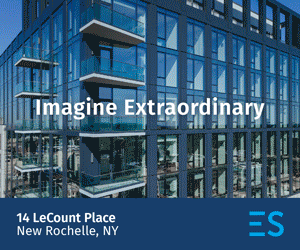Interview: Conecta Caribe Is Leading the Project to Build a Bigger and Better Airport in Cartagena by 2025
With an already-massive port business and a spike in international tourism, Cartagena’s Rafael Núñez International Airport is nearing capacity. To solve the problem, Conecta Caribe, along with a team of partners, has devised a proposal to construct a bigger and better airport for the Colombian jewel of the Caribbean.
Photo: Rodrigo Araujo of Conecta Caribe is organizing the feasibility study now in hopes of breaking ground on a new airport in Cartagena by 2020. (Credit: Loren Moss)
To find out more about this enormous undertaking and where the project currently stands, Finance Colombia Executive Editor Loren Moss recently sat down with Rodrigo Araujo of Conecta Caribe.
Among other topics, they discussed the reason that the city needs a new airport, the growth of tourism, and the logistical challenges of bringing together a team to plan, fund, and build a facility that can replace the current Rafael Núñez International Airport.

An early graphic illustrating what Conecta Caribe is planning for the new airport in Cartagena. (Credit: Conecta Caribe)
Loren Moss: How did you develop the idea that Cartagena now needs a bigger airport? The airport here seems about medium-sized. It has a big waiting room for local and international flights, Avianca has a V.I.P. lounge there, and several domestic as well as international flights come in here. Has the airport reached its capacity, and why is there the idea that another, bigger airport is needed here in Cartagena?
Rodrigo Araujo: Cartagena has been growing a lot, both in local and international traffic, and we believe it has very great potential to continue growing, because it is a very big tourist attraction and it is a port city. The cruise business has also been growing a lot in the city, and all of that requires an airport infrastructure that lives up to its potential for development.
“The present airport has a capacity of some 5 million people. Last year, Cartagena had 4.4 million passengers, and this year we may be reaching the airport’s capacity.” – Rodrigo Araujo
The city was asking itself the wrong question when it asked where the potential for the present airport was. Rather, the question is how to promote tourism, and the logistical, commercial and industrial development of Cartagena. And it seems to us that the answer to that question is with a new airport that has all the necessary infrastructure and the capacity to grow at the pace that the city requires — that the city demands.
Loren Moss: Right now, has the airport reached its capacity? How many more years can it stay functional without reaching its maximum capacity point?
Rodrigo Araujo: The city is really attracting a lot of international tourists and a lot of international investors. There have been a lot of projects in the tourism sector: a Hyatt Hotel, Intercontinental Hotel, Conrad Hilton Hotel, a new Melia, Sheraton Four Points, Four Seasons, and recently a Hampton Inn and a couple of Holiday Inns. There’s a lot of investment.
Additionally, there are projects like Karibana, and there are projects like Serena del Mar, which is building one of the most important hospitals in Colombia in a city where there was a deficit in hospital infrastructure. Several condominiums are being built around this concept of the hospital as a hub. And another golf course is coming there — a lot of development.
All of this is bringing about a lot of investment. Many foreigners see Cartagena as a possibility for investment in a second home, both in projects like these that I’m telling you about and in the city center, where there are some really spectacular mansions belonging to Colombians and foreigners who have found in the center of the city of Cartagena a jewel in which to invest.
All of this is bringing about a lot of investment, and is making both local and international tourism grow. In the last ten years, both local and international tourism has always grown at over 10%. Last year, international tourism grew by 30%. All of this is a very important growth.
The present airport has a capacity of some 5 million people. Last year, Cartagena had 4.4 million passengers, and this year we may be reaching the airport’s capacity. So, the national government has decided to make some investments in the present airport to raise its capacity to some 7.5 million passengers while the new airport is being built. When the new airport has been built, the facilities will be passed on to the new property, this new location. That should happen around 2025. So we have seven or eight years to finish structuring this project, make its financial closure, and build it before 2025.
Loren Moss: And how are we doing now in the process? What will the government’s participation be? What will the investment market’s participation be? Whether it is private capital or public/private partnership, what is the structure of the project?
Rodrigo Araujo: The project is a public/private initiative of private origin and with 100% private resources. This kind of public/private association allows private investors to invest in developing a public structure like, in this case, an airport. And then the government gives it to us as a concession for a time, for cooperation, and with an expected profitability.
The originating company, which is called Conecta Caribe, presented the initiative to the government, and it was approved at the pre-feasibility level in January of this year. From there, they gave us 12 months to elaborate on the feasibility, which is extendable for 12 months more. We are doing so now.
In order to do it, we have created a world-class team, with advisors such as ALG, which are Spanish advisors specialized in airport matters, and Aecom, an international American firm that has offices in 150 countries and a lot of experience in construction of all kinds of infrastructure and specifically airports, too. They are the ones that are doing the engineering and the architecture of this project in its feasibility phase. And we are working with Inverlink investment banking, with the Camilo Ospina Bernal law offices, which have a lot of experience in these matters of public/private initiatives. So we’re in that phase of the process — elaborating the feasibility studies.
We hope that in 2018 the feasibility will be approved and we will be signing the contracts with the government to begin the pre-construction phase of the airport. Then we can build it between 2019 and 2024 to inaugurate it in 2025.
Loren Moss: And in that case, which year would be ideal to start construction?
Rodrigo Araujo: Starting construction in 2020.
“We hope that in 2018 the feasibility will be approved and we can build it between 2019 and 2024 to inaugurate it in 2025.” – Rodrigo Araujo
Loren Moss: To get the money together, obviously you already have an investment bank, but will that include the traditional sources, like private capital or private equity? Or is there another way to find institutional investors?
Rodrigo Araujo: That’s right. In this case, we are looking for strategic allies who comply with some requirements in terms of capital and experience, which the government is going to demand from us.
It must be a company that has experience investing in infrastructure of this kind. It’s a characteristic that the leading investor in this project has to have. And with the investment bank, we are in the process of looking for that strategic partner.
Loren Moss: Right now, we are in the last year of Santos’ government, which has been very involved in infrastructure, very involved in the growth of airports. What uncertainty is there? We don’t have any idea who the next president will be — it is too early to say. But there are like nine candidates — it’s very wide open in terms of their ideas, their way of governing, their philosophical model. What uncertainty does that give the project?
Rodrigo Araujo: Really, this project has achieved a consensus, both nationwide and district-wide, because the national and district governments have realized the need for a new airport for the city of Cartagena. So we’re counting on the support of the outgoing government and, we hope, also from the incoming government.
This is a project that really promotes the development of Cartagena and the development of the region. The project is made up of several elements that make it so attractive. The first one is the strategic location of the new airport, which is really very close to the city of Cartagena. It is four kilometers from Serena del Mar, to the north of the city — very close. You will be some 20 or 25 minutes from the city center — just 10 minutes from the present airport —with all the connectivity that is being constructed nowadays in Cartagena.
The airport is on the other side of the Cienaga de la Virgen. It is very well located around two “4G” highways, which makes the project make a lot of sense. Additionally, when the new airport opens, the lots of land at the present airport will be included into the development of Cartagena, and that too is a great attraction for the city and for the nation.

An early graphic illustrating what Conecta Caribe is planning for the new airport in Cartagena. (Credit: Conecta Caribe)
Loren Moss: Yes, it seems to me that now at the present airport there isn’t a lot of space for cargo operations. Local cargo arrives, but they can’t do operations with great quantities of cargo because there isn’t enough space. The airport is now practically in a residential neighborhood.
Rodrigo Araujo: We have presented a proposal, which is this public/private initiative to build an airport, but the project also includes the development of a whole “citadel” around the airport, which is very important.
“Really, this project has achieved a consensus. So we’re counting on the support of the outgoing government and, we hope, also from the incoming government.” – Rodrigo Araujo
Because on one hand, we foresee the need for land for the development of a second runway at the airport, which will be needed later on in a few years. We are foreseeing the lands that will be needed for future expansions of the airport.
But, with this whole citadel, we are also foreseeing that the grounds around the airport should also be compatible with the development of the airport. So we dream of developing a logistic commercial park to complement the airport services and to protect it against residential areas becoming affected by noise or influence from the airport. Here, we are defining a whole zone around the airport in which developments compatible and complementary with the airport can be built.
Loren Moss: Thinking about the long term so there’s room to grow?
Rodrigo Araujo: Exactly. So really a lot of opportunities are going to be generated for local investors and international investors to develop a lot of businesses, not only in the airport but also around the airport. We think that the airport will turn into a kind of anchor for the development of a multitude of other businesses around the airport.
Loren Moss: How has the peace process changed the growth in international tourism? Because the peace process is perceived as totally different inside Colombia than outside. There are valid points on every side, but outside the country, in international opinion, it’s interesting that people are already thinking, “OK, let’s go to Colombia.” And Cartagena is the most touristy place in Colombia. How is that increasing demand for air traffic or visitors or international tourism?
Rodrigo Araujo: I wouldn’t be able to tell you exactly which factors are influencing it, but definitely Cartagena is experiencing an explosion in international tourism. I think that the peace process has helped a lot, in addition to the beauty of the city and the amount of attractions in Colombia.
I think that the country has realized that tourism can be a great source of the development for Colombia and a generator of foreign currency and prosperity. It seems to me that the government has been promoting the development of tourism very well in the country, and Cartagena has been the spearhead of that development.
It has been benefitting very well, and it has been growing, both in infrastructure, which is the offer it makes to the country, and in the arrival of visitors. The rates have been really going up very well. The city that has had the most important growth in traffic and flow of passengers is Cartagena.
“A lot of opportunities are going to be generated for local investors and international investors to develop a lot of businesses — not only in the airport but also around the airport.” – Rodrigo Araujo
Loren Moss: And what is the next step in the project? Where are we and what has to happen next?
Rodrigo Araujo: At the moment we are developing the feasibility studies that we have to present to the government within the next few months. And we hope to carry out, with the government, whatever adjustments may be necessary for the feasibility study to be approved.
Along with that, we will also need to have the financial closure of the project to be able to build it. Of course, we have to get the environmental licenses, and all the license and permits that are required for a project like this.
Loren Moss: Excellent. Well, at Finance Colombia we’re going to be following the whole process and waiting for any news about the next steps. And since we are at an early stage, how can the community of institutional investors — people in private capital and investment banks — follow the process and learn more about the project?
Rodrigo Araujo: They can contact us at Conecta Caribe or through our investment bank, which is Inverlink.
This interview has been edited for clarity and space.
























